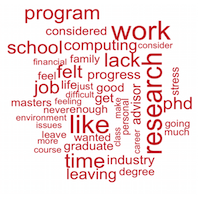CCC-Led White Papers on the Science of Autonomy
In May, the Computing Community Consortium (CCC) commissioned members of the research community to generate white papers to help guide strategic thinking in autonomous systems in a number of different domain specific areas, including Aerial Earth Science, Construction, Defense, Disaster Management, Healthcare, Paths Towards Autonomy, Service Robots, and Transportation Systems.
The CCC has released eight white papers. The Toward a Science of Autonomy for Physical Systems white paper frames both the opportunities and challenges posed by autonomous physical systems in general.
We contend that, in most cases, the potential human and economic toll of not exploring and understanding automation science in a timely and thoughtful manner far outweighs the costs or risks. The associated papers in this series amplify these themes by exploring domains where future advances in the science of autonomy intersects opportunities to advance our collective good.
Aerial Earth Science
Unmanned Aerial Vehicles (UAVs) equipped with LiDAR, electro-optical and infrared cameras, SAR and atmospheric sensors have transformed the way we acquire high spatio-temporal resolution data. Coupled with satellite imaging, unmanned and autonomous aerial vehicles are poised to transform how we monitor the millions of physical, chemical, and biological processes on planet Earth.
Construction
Today, ensuring and improving safety, productivity, quality, and sustainability in construction, operation, and maintenance of national civil infrastructure systems through advances in robotics and automation is a national imperative. By “national civil infrastructure” we refer to the 4.5M commercial buildings, 3.9M miles of public roads, 2M miles of oil and natural gas pipelines, 600K bridges, 190K cell phone towers, 120K miles of major railroads, 100K miles of levees, 84K dams, 50K miles of electrical power lines, 25K miles of commercially navigable waterways, and 5K public-use airports in the United States, all of which are critical to our national economy and society. In the following, we discuss the current state of construction and operation of the national civil infrastructure systems in detail and present several opportunities for improvements through research and education on robotics and automation.
Defense
Militaries around the world have long been cognizant of the potential benefits associated with autonomous systems both in the conduct of warfare and in its prevention. This has led to the declaration by some that this technology will lead to a fundamental change in the ways in which war is conducted, i.e., a revolution in military affairs (RMAs) not unlike gunpowder, the long bow, the rifled bullet, the aircraft carrier, etc.
Disaster Management
A Science of Autonomy is critically needed because it would enable computational agents that can manage the extreme scales and mine for hidden dependencies, threats, and opportunities in order to assist the accountable parties. Autonomous agents do not tire or become distracted by the emotional nature of large-scale disasters. Agents can work fully autonomously, exploring areas otherwise inaccessible to humans, and can provide a semi-autonomous triage function either in situ or via teleoperation, filtering 90%-99% of situations that are not worthy of human attention and intervention, and directing human resources to the requisite critical locations.
Healthcare
While we’re happy to entertain the idea that autonomous systems will grow our food, build our buildings, and drive us to work, somehow the idea that autonomous physical agents may one day provide key healthcare services seems harder to envision or accept. One might argue that it is our relative unfamiliarity with healthcare that creates this feeling. We drive our car every day and have an understanding of how cars work, but we never take out an appendix. Perhaps the realities of medical interventions are just too far from our experience to understand how autonomous robotic systems might enhance our healthcare.
Paths Towards Autonomy
An Autonomous Physical System (APS) will be expected to reliably and independently evaluate, execute, and achieve goals while respecting surrounding rules, laws, or conventions. In doing so, an APS must rely on a broad spectrum of dynamic, complex, and often imprecise information about its surroundings, the task it is to perform, and its own sensors and actuators. For example, cleaning in a home or commercial setting requires the ability to perceive, grasp, and manipulate many physical objects; the ability to reliably perform a variety of subtasks such as washing, folding, and stacking; and knowledge about local conventions such as how objects are classified and where they should be stored. The information required for reliable autonomous operation may come from external sources and from the robot’s own sensor observations or in the form of direct instruction by a trainer.
Service Robots
A recent study by the Robotic Industries Association has highlighted how service robots are increasingly broadening our horizons beyond the factory floor. From robotic vacuums, bomb retrievers, exoskeletons and drones, to robots used in surgery, space exploration, agriculture, home assistance, and construction, service robots are building a formidable resume. In just the last few years we have seen service robots deliver room service meals, assist shoppers in finding items in a large home improvement store, check in customers and store their luggage at hotels, and pour drinks on cruise ships. Personal robots are here to educate, assist, and entertain at home. These domestic robots can perform daily chores, assist people with disabilities, and serve as companions or pets for entertainment. By all accounts, the growth potential for service robotics is quite large.
Transportation Systems
Transportation systems are currently being transformed by advances in information and communication technologies. The development of autonomous transportation holds the promise of providing revolutionary improvements in speed, efficiency, safety, and reliability along with concomitant benefits for our society and economy. It is anticipated these changes will soon affect household activity patterns, public safety, supply chains and logistics, manufacturing, and overall quality of life.
To see all of these white papers, please refer to the CCC-led White Papers page on the CCC website.










